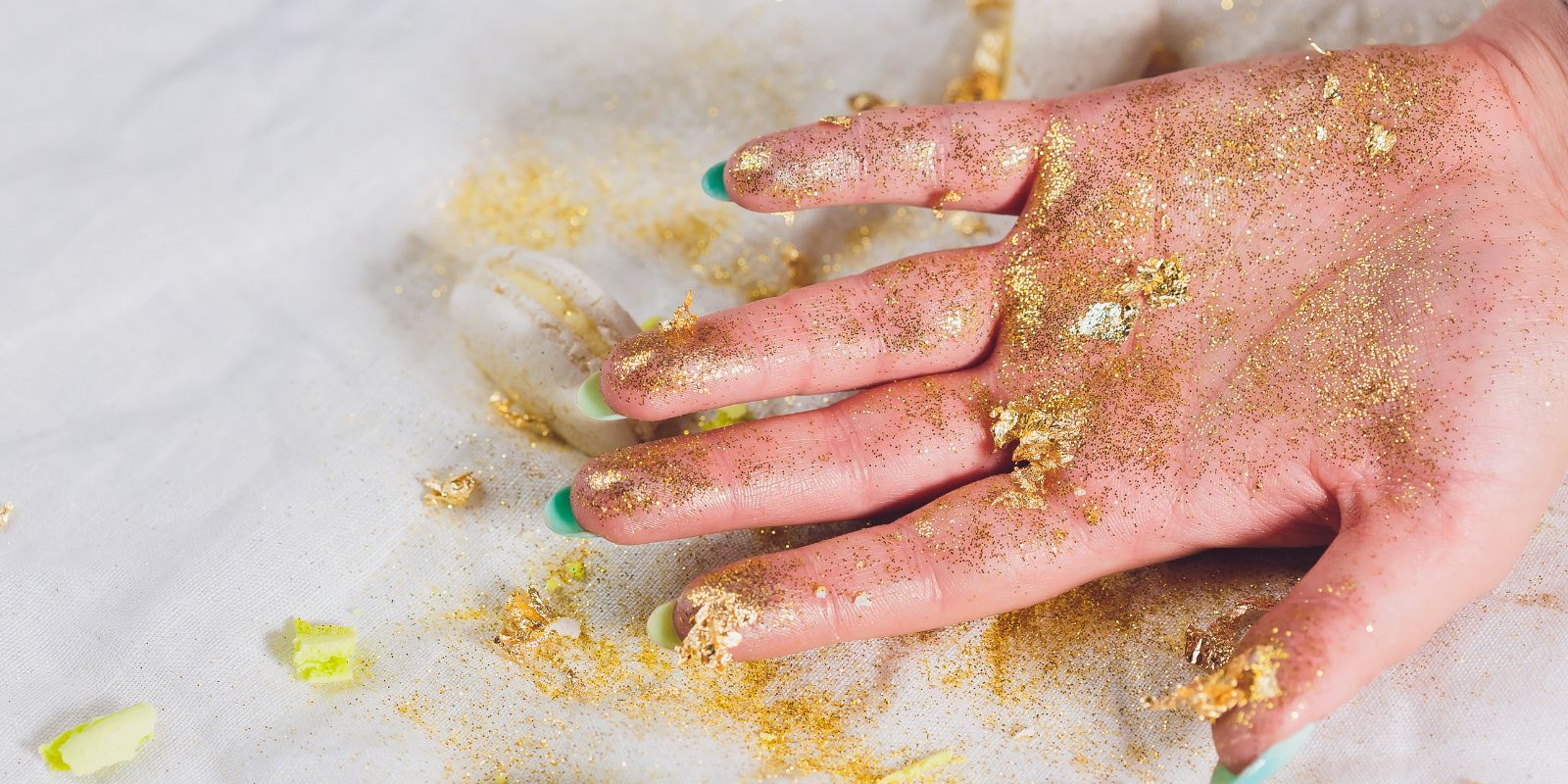إذا كنت من مُحبي الراتنج، فمن المُرجّح أنك مررت بلحظةٍ انقطع فيها إبداعك بسبب طفح جلدي مُزعج أو تهيج مُزعج. لستَ وحدك! مشاكل الجلد أثناء صناعة الراتنج أكثر شيوعًا مما تظن، خاصةً إذا كنت تعمل دون احتياطاتٍ مناسبة. لكن لا تقلق، فنحن هنا لنضمن لك تجربةً آمنةً وممتعةً مع الراتنج.
مشاكل الجلد الشائعة أثناء صناعة الراتنج
1. التهاب الجلد التماسي
هذه هي مشكلة الجلد الأكثر شيوعًا، وتحدث عند ملامسة الراتنج أو المُصلِّب لبشرتك مباشرةً. قد تُسبب احمرارًا وحكةً، وأحيانًا بثورًا.
2. ردود الفعل التحسسية
يُصاب بعض الأشخاص بحساسية تجاه راتنج الإيبوكسي مع مرور الوقت. تتراوح الأعراض بين حكة خفيفة وتورم شديد أو طفح جلدي.
3. الحروق الكيميائية
على الرغم من ندرة حدوث ذلك، فإن التعرض المباشر للراتنج غير المعالج يمكن أن يؤدي إلى حروق كيميائية، خاصة إذا ترك على الجلد لفترة طويلة.
4. الجفاف والتشقق
حتى التعرض غير المباشر - مثل العمل في بيئة مليئة بالراتنج - يمكن أن يؤدي إلى جفاف بشرتك، مما يؤدي إلى التشققات وعدم الراحة.
لماذا تحدث هذه المشاكل الجلدية؟
الراتنج مادة تفاعلية، مما يعني أن مواده الكيميائية قد تتفاعل مع زيوت بشرتك الطبيعية وطبقاتها. يُعدّ عدم تصلبها خطيرًا للغاية، لأن المواد الكيميائية أقوى. تنشأ معظم المشاكل من: - التلامس المباشر مع الراتنج أو المُصلّب.
- التعرض لفترة طويلة دون حماية مناسبة.
- عدم العناية ببشرتك بعد الانتهاء من عملية التصنيع.
تقنيات الوقاية للبقاء آمنًا
1. استعد!
تعامل مع صناعة الراتنج كتجربة معملية، فهي كذلك بالفعل. ارتدِ دائمًا:
- قفازات النتريل : تتميز بمقاومتها للمواد الكيميائية الراتنجية وحماية بشرتك بشكل أفضل من قفازات اللاتكس.
- الملابس ذات الأكمام الطويلة: قم بتغطية أكبر قدر ممكن من الجلد لتجنب الانسكابات العرضية.
2. العمل بذكاء
- استخدم الأدوات وليس اليدين: استخدم الملاعق، وأعواد الخلط، والأدوات الأخرى لتقليل ملامسة الراتينج.
- اعمل في مكان جيد التهوية: تدفق الهواء الجيد يقلل من الأبخرة ويجعل البيئة أكثر أمانًا لبشرتك.
3. كريمات الحاجز
ضع كريمًا واقيًا قبل البدء بالعمل. فهو يُضيف طبقة حماية إضافية في حال ملامسة الراتنج لبشرتك.
4. نظف الانسكابات على الفور
إذا لامس الراتنج بشرتك، اغسله بالماء والصابون فورًا. تجنب استخدام المذيبات مثل الأسيتون، لأنها قد تزيد من التهيج.
5. اختبار المنتجات الجديدة على رقعة صغيرة
هل تجرب راتنجًا أو مُصلِّبًا جديدًا؟ قم بإجراء اختبار على منطقة صغيرة أولًا للتأكد من عدم وجود حساسية.
علاجات لمشاكل البشرة
إذا لم تنجح الوقاية هذه المرة، فإليك كيفية التعامل مع مشاكل الجلد الشائعة:
لالتهاب الجلد التماسي:
- اغسل المنطقة المصابة جيدًا بالماء الدافئ والصابون المعتدل.
- استخدمي غسولًا مهدئًا مثل الصبار أو كريم الهيدروكورتيزون لتقليل الحكة.
في حالة ردود الفعل التحسسية:
- تناول مضادات الهيستامين مثل السيتريزين لتقليل التورم والحكة.
- إذا تفاقم رد الفعل، استشر طبيب الأمراض الجلدية على الفور.
للحروق الكيميائية:
- اشطف المنطقة المصابة بالماء البارد لمدة لا تقل عن 15 دقيقة.
- تجنب الفرك، وضع كمادات باردة. اطلب المساعدة الطبية إذا كان الحرق شديدًا.
للبشرة الجافة:
- رطبي بشرتك بانتظام باستخدام كريم خالٍ من العطور.
- تجنب القيام بالأعمال اليدوية لعدة أيام للسماح لبشرتك بالشفاء.
نصائح احترافية لصناعة الراتنج بشكل آمن
- لا تقلل من شأن الأبخرة: استخدم قناعًا، حتى لو كنت تعتقد أنك "تسكب القليل" فقط.
- استخدم قفازات مضاعفة: إذا كنت تعمل في مشاريع كبيرة، قم بتغيير القفازات بشكل متكرر لتجنب التسرب أو التمزق.
- استثمر في الراتينج عالي الجودة: المنتجات عالية الجودة، مثل تلك التي تنتجها شركة Tulsi Resin Store ، غالبًا ما تحتوي على عدد أقل من المواد المهيجة.
الأفكار النهائية
صناعة الراتنج تجربة رائعة، لكن السلامة تأتي دائمًا في المقام الأول. يمكن تجنب مشاكل البشرة أثناء صناعة الراتنج بقليل من التحضير واستخدام الأدوات المناسبة. وإذا واجهتَ أي مشكلة، فأنت الآن تعرف كيف تتعامل معها باحترافية.
بفضل مواد عالية الجودة من متجر تولسي للراتنج ، ومع اتباع احتياطات السلامة اللازمة، يمكنك التركيز على ما يهمك حقًا - إبداع أعمال فنية راتنجية رائعة دون أي انقطاع. عمل فني ممتع!



لماذا يتحول لون الراتنج إلى الأصفر؟ الأخطاء الشائعة وطرق الوقاية
أفكار هدايا من الراتينج: كيفية صنع هدايا مخصصة